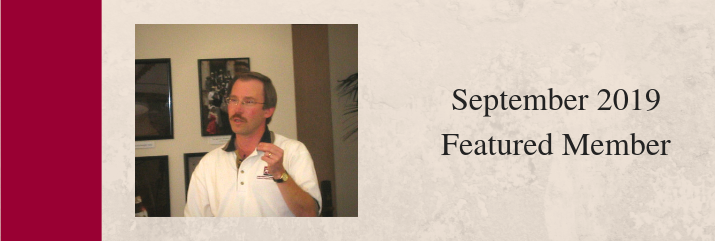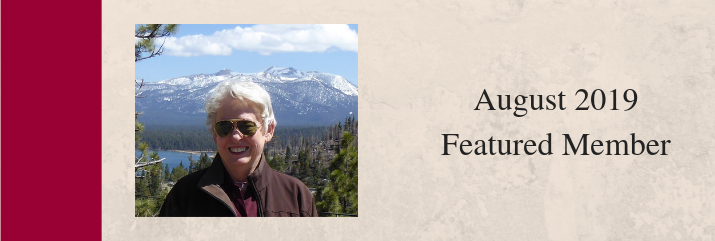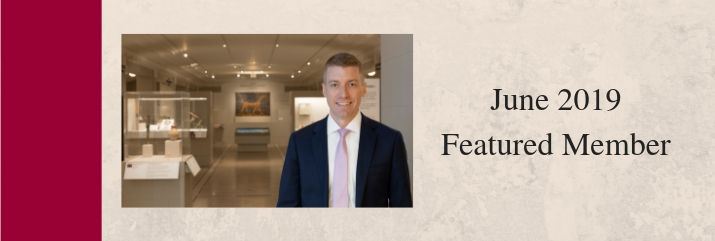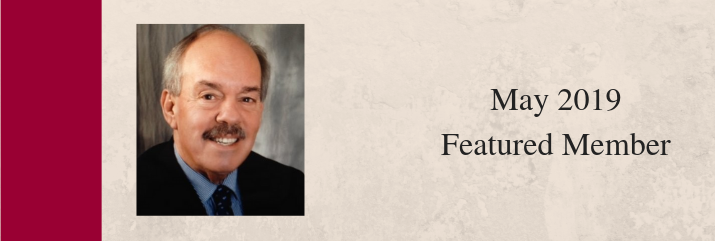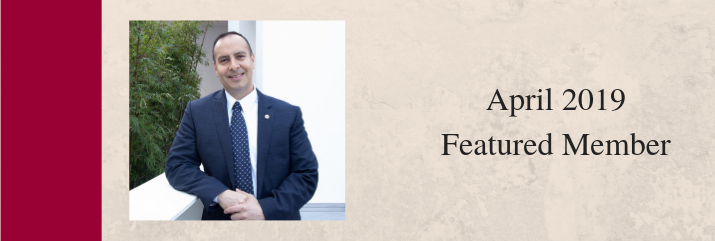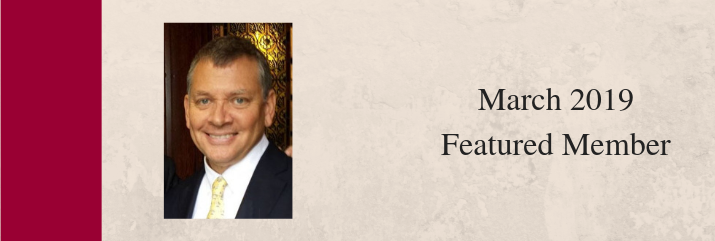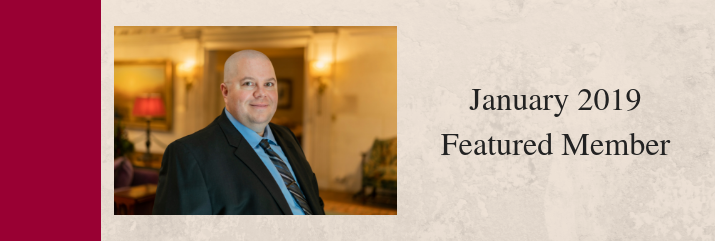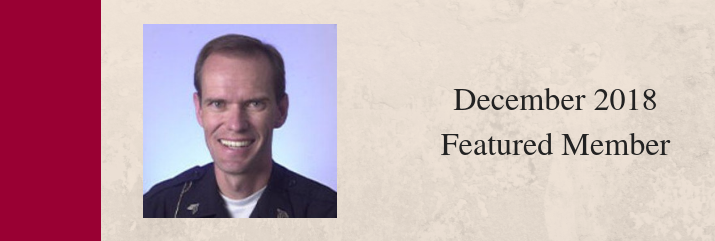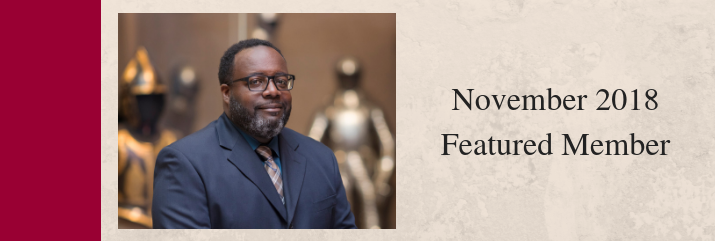| INTERNATIONAL FOUNDATION FOR |
Past Featured Members |
Nick Artim PE, CIPT, CIPI currently serves as the director of the Heritage Protection Group, a Middlebury, Vermont based collaborative of fire protection and security consultants and engineers that specialize in the protection of unique, specialized and heritage facilities. With more than thirty years of fire protection engineering experience his projects have included sites in the United States, Canada, the United Kingdom, Bermuda, Ireland, Sweden, Finland and Russia. His clients have included the United States National Park Service, California Department of Water Resources, New York State Office of Parks and Historic Preservation, President Thomas Jefferson’s Monticello, the National Library of Ireland, the United States Marine Corps, and the Canadian Museum of Civilization. Prior to founding the Fire Safety Network, he was the Chief Fire Protection Engineer for the Architect of the United States Capitol where he was responsible for fire and life safety at the U.S Capitol Complex. These buildings included the Capitol Building, Congressional Office Buildings, Library of Congress, U.S. Supreme Court and the U.S. Botanical Garden. He also served as a professional fire fighter for the Anne Arundel County (Maryland) Fire and Rescue Services. Nick is a registered fire protection engineer in several states. He has a formal education consisting of an Associate’s Degree in Fire Protection Technology from the State University of New York and a Bachelor of Sciences Degree in Fire Protection from the University of Maryland. He is a member of the Society of Fire Protection Engineers (SFPE) and the National Fire Protection Association (NFPA), the National Fire Protection Association, the Association for Preservation Technologies (APT) and the International Association of Museum Facilities Administrators (IAMFA). He serves as a principal committee member on National Fire Protection Association Committee on the Protection of Cultural Resources, which produces document #909, Standard for the Protection of Cultural Resources. He is the past task group chairman on NFPA #914, Protection of Historic Buildings. Nick serves as an Advisor Board member, regular instructor, and Fire Protection Advisor for IFCPP.
By Nella Letizia, WSU LIbraries In fact, after 31 years, there aren’t many mysteries or problems that Brady, Owen Science Library’s preservation manager and research librarian, can’t solve. Need to know how to save water-damaged books and journals by freeze-drying? Brady figured that out in 1986, enlisting the late John Guido – head of Manuscripts, Archives and Special Collections – WSU’s food services department and the College of Veterinary Medicine to help with the task. Did Charles Darwin contend that animals and babies couldn’t feel pain in his landmark “On the Origin of Species?” Yes, he did, as Brady discovered for Vicki Croft, former head of the Animal Health Library and fellow retiree this year, who asked Brady to answer the question for a WSU student. “When I think of Eileen’s strengths and achievements within WSU Libraries, these come to mind: her excellence as a reference librarian; her collegiality to her co-workers, particularly as a mentor to new librarians; and her user advocacy,” Croft said. “I know of no other WSU librarian with her range of expertise and knowledge in subjects from the sciences, engineering and agriculture to the humanities and social sciences,” she said. “She is a Renaissance librarian, one who can ferret out answers to the most difficult questions.” Brady’s versatility and can-do spirit will be celebrated at a retirement reception 2-4 p.m. Friday, Dec. 12, in Owen Science Library’s main lobby. Omaha girl goes to HollywoodBrady didn’t initially intend to work as a librarian. Attending Creighton University in Omaha, Neb., in the early 1960s, she prepared for a career in medical technology. But she realized after taking courses for three years that she didn’t relish the prospect of sticking people with needles. “I switched in my senior year to a history major,” she said. “It meant getting 21 upper-level credits in two semesters. I graduated in four years with a B.A. in history that I started in my senior year.” She found that getting a job with a history degree was even harder than cramming four years’ worth of upper-level courses into one. But she had read a book by Hollywood director-producer Mervyn LeRoy with a chapter about TV and movie research at a studio. “I thought that would be very interesting and fun,” she said. “I went down to the Omaha Public Library, got out the telephone directories for Los Angeles, got the addresses for the studios and sent letters to the research departments at all of these studios.” In 1965, Brady went to work for de Forest Research Inc., a private research company that handled TV scripts for “Star Trek,” “The Wild Wild West,” “Mission: Impossible,” “I Spy” and other shows. She and other researchers checked scripts for accuracy – dates, quotations, locations and more – using whatever resources were available in that pre-computer and -Internet era. Sometimes, she got a call back from an irritated producer questioning her findings. “‘What do you mean you can’t put a silencer on a revolver?’” Brady recalled from one such conversation. “I explained to the man why that doesn’t work, and he said, ‘Who would know that? Nobody would know that.’ I said, ‘Well, I’m a 21-year-old girl from Omaha, Nebraska, and I know that.’” Are there cobras in the Philippines?Brady’s stint with de Forest Research lasted only a year; illness forced her to take a leave of absence and return to Omaha. By the time she was well again, another researcher had taken her place. “I liked that job; I really liked doing it,” Brady said. “I thought maybe I should go to library school so I could learn to do it better. So I applied to and was accepted at University of Southern California and went back to Los Angeles.” In graduate school, she worked full-time at the Los Angeles Public Library as a librarian trainee. And while she wasn’t rubbing elbows with television producers anymore, the new post was far from boring. In another position with LAPL she manned telephone reference calls on the night shift, starting at 9 p.m. and working until 1 a.m. During those shifts, anything could happen – and frequently did. A colleague was mugged outside the employee entrance to the library just as Brady started work one evening. Someone started a fire another night. Brady chased out an intruder trying to break in on another shift. The public library gig also introduced Brady to a very different kind of patron. “We got calls from all over the world,” she said. “I remember one time getting a call from Manila. Some sailors in a bar wanted to know if there were cobras in the Philippines. We had some very strange calls, a lot of them from bars.” Of lab mice and menBrady came to WSU Libraries in September 1983 after working with Coeur d’Alene and Spokane public libraries and continuing to do freelance research for motion pictures and television. Soon enough, she was making a name for herself as a tenacious researcher in multiple academic disciplines and as an advocate for students. “My students in the Harold Frank Engineering Entrepreneurship Institute at WSU need to access both technical and business information that is often difficult to find,” said institute director Howard Davis. “This is especially true when you are a novice. “Enter the super-sleuths. Eileen and her partner in crime, Mary Gilles (business reference librarian), are incredible resources and love interacting with the students,” Davis said. “I get rave reviews from my students about the help Eileen and Mary have given them. In the process, they learn how to access information from the best.” Brady also kept a cool head when the situation warranted it. She and Betty Galbraith, Owen science librarian and instruction coordinator, walked into Owen one morning to find the male employees “huddled behind the circulation desk,” Galbraith said. They told the women that students playing a prank had released lab mice into the library, and the men were trying to figure out who to call. “Eileen and I just looked at each other. Eileen grabbed a cardboard box, we went over to where the mice were and we captured them,” Galbraith said. “Both of us grew up in the country. It was a case of city boys and country girls.” BlumbergOver time, library security figured more prominently in Brady’s responsibilities, an interest that started at the Los Angeles Public Library with its rough-and-tumble clientele. In addition to library working groups for preservation and health and safety, Brady serves as board or committee member for such professional associations as the International Foundation for Cultural Property Protection, National Fire Protection Association and Smithsonian’s National Conference on Cultural Property Protection. She also founded and edited a library journal called Focus on Security for 10 years. But the Stephen Blumberg case epitomized what libraries around the world stood to lose if they weren’t vigilant about their holdings. In 1988, WSU library staff discovered papers had disappeared from a rare collection. Then books turned up missing. By the end of the investigation by WSU police officer Steve Huntsberry, almost 400 books and 2,500 manuscripts – roughly worth $500,000 – were gone from WSU. Huntsberry learned that other universities reported similar losses. Two years later, Blumberg was arrested in Ottumwa, Iowa, for stealing more than 23,600 rare books and other materials from 270 universities and museums in 45 states, two Canadian provinces and Washington, D.C. Their value was initially estimated at about $20 million, later changed to $5.3 million – the largest book theft in U.S. history. Blumberg was subsequently tried and convicted in 1991 and sentenced to six years in prison. Brady, serving on the Faculty Senate Library Committee when the WSU thefts were uncovered, was at a committee meeting when Huntsberry reported on his investigation. Brady helped him answer questions he had about the materials and libraries in general. “(Huntsberry) became very highly regarded by the Society of American Archivists because of what he had done,” Brady said. “Actually, he had written an article naming Blumberg as the probable thief months before the arrest.” Huntsberry and Brady were invited to speak at Smithsonian’s National Conference on Cultural Property Protection in 1995. Huntsberry discussed the case; Brady gave a presentation on disclosing the identity of book thieves to other librarians to prevent future thefts. That same year, when Blumberg was up for parole, both testified at his hearing. Brady explained why Blumberg’s theft was so devastating in a 2012 Washington State Magazine article: “‘The original material tells you a lot of things that you cannot get from a photocopy,’ she says, noting writing in the margins, ink and paper used. Even the smell and the feel of them tell you something…” Back to televisionSo what does a librarian who has worked in Hollywood do when she retires? Why, publish the first volume of a massive television reference guide, of course. When her alma mater Creighton University interviewed her for its alumni magazine in 1995, Brady described the scope of her project then: 57 pounds of 4×6 file cards detailing facts about TV series; 1,300 shows for the 1960s alone; and 18,000 hours of research. She estimates those figures have doubled since then. “But I can’t answer any questions about current television whatsoever,” she said with a laugh. Galbraith, like her WSU Libraries’ colleagues, might dispute that. Librarians don’t retire; they just get re-shelved, as one saying goes. “We are really going to miss her being a walking encyclopedia of Owen collections and services,” Galbraith said. “Even with a bad citation, she can find anything.”
Eric Drewry, CPP, CIPM, is the Director of the Department of Protection Services at the Detroit Institute of Arts. He leads strategic and operational protection efforts, leveraging technology and creative challenge-solving as force multipliers and initiators in the development of cross-organizational endeavors to protect the priceless collection and cultural heritage at one of the top fine art museums in the United States. Eric has significantly expanded the role, reach, and status of the Department of Protection Services since arriving at the DIA in 2015 and continues to explore new and innovative ways to provide mission-driven security and leadership in the rapidly-evolving realm of cultural property protection on an institutional level as well as locally, nationally and internationally. Eric previously served in senior security and safety management at Monticello, the home of US President Thomas Jefferson in Charlottesville, Virginia, providing leadership in risk mitigation, physical security, event planning and protection, business and operational continuity, and emergency preparedness and operations. “Ten years ago I had never heard of the term ‘cultural property protection’”, Eric recalls. “I was on track to follow in my father’s footsteps and become a police officer when a tremendous opportunity came about to lead the safety and security team at Monticello. I was a little shocked, to be honest. I had worked in private security for my entire adult life, but I was 28 years old and I was literally being handed the keys to a national monument and I was responsible for making sure nothing happened to it.” When asked about his favorite part of the job, a smile grows across Eric’s face. “Hands down, my favorite part is developing people, serving people. Nothing is better than seeing an employee under my charge go on to do bigger and better things. It means that sometimes I lose great people but I never want to hold them back. I want everyone to outgrow their job, to build skills that allow them to move up and succeed, if that’s what they want to do. If they’re ready to make that move and I don’t have a spot for them, I encourage them to find it elsewhere. I think I developed that management style when I worked at a university. I supervised a lot of student employees, and it hit me one day that my responsibility wasn’t much different than the professors in the classroom. I had to give the students the tools and experience that would allow them to succeed in the workplace after they graduated. The professors were giving them the technical knowledge and I was giving them an environment in which they could apply that knowledge and hone their skills. I’ve carried that same passion with me throughout my career and I know it will always be a motivating force for me. It’s addicting, helping others succeed.” In January 2019, Eric developed and deployed a technology-driven COMPSTAT model designed to engage departments from across the museum in protecting the DIA’s collection. These internal COMPSTAT meetings are driven by a custom-built heat mapping program that allows decision-makers across numerous disciplines to see where and how visitors are violating policies and determine the appropriate resources and tactics to address threats to the collection. The program has seen far-reaching positive impacts, including directed and flexible deployment of security and volunteer staff to monitor “hot spots”, reduction in overtime wages, empowerment of security staff through intelligence, and insight into how visitors are interacting with the collection. “To be honest, we’re just scratching the surface with our COMPSTAT program right now. It’s six months old and every time I look at it, I find another way to use it. It can turn into a rabbit hole pretty quickly”, he remarks. “It’s generated a tremendous amount of usable information and intelligence that not only helps us protect our collection in a smarter way, but we’ve also seen a significant reduction in visitor complaints related to security staff interactions. Our staff are smarter because of it, our business operation is smarter because of it, and I really feel like we’ve put the DIA on the cutting edge of collection protection.” In May 2019, the DIA’s COMPSTAT program was the recipient of an award from the American Alliance of Museums Media and Technology Professional Network, which recognizes institutions that enhance the visitor experience through useful and innovative digital programs and services. Eric holds a Bachelor of Science in Criminal Justice from Grand Valley State University in Allendale, Michigan, as well as numerous professional certifications including Certified Protection Professional through the American Society for Industrial Security and Certified Institutional Protection Manager, Level II, through the International Foundation for Cultural Property Protection.
Gary Miville has been a member of the IFCPP since 2009 and has spoken and helped to teach IFCPP’s certification programs for many years. He not only hosted their first certification class for Certified Institutional Protection Instructor but was a member of the course as well. Gary was asked to participate at the 2016 Smithsonian National Conference on Cultural Property Protection and is now a long-term board member of the New England Chapter of the IFCPP. Currently the Regional Vice President for RIBI / USentra Security based out of Warwick Rhode Island, Gary has been in the security industry for over 45 years. His diverse background began with the Travelers Insurance Company, where he earned the title of Security Coordinator for their Data Centers and properties in Hartford, CT, and Norcross, GA. It was also during this time that Gary operated as a Special Police Officer, Special Deputy Sheriff in Connecticut. Gary took his management and operations experience to Pinkerton Security, joining their ranks as the Operations Manager for the Connecticut territory. Pinkerton was acquired by Securitas Security Services USA, and Gary saw himself promoted to Branch Manager of Northern Connecticut, Western Massachusetts, and Vermont. Under his leadership, the unit grew to historical levels. As a result, Gary was once again promoted, becoming the Area Vice President of Western/Central Massachusetts, Vermont and Rhode Island. In addition to his vast knowledge in industry operations and best practices, Gary was a licensed Emergency Medical Technician (EMT) and has been a CPR/FA instructor for 27 years. A 36-year member of ASIS International, Gary has served as Chapter Chairman in Western Massachusetts, Rhode Island, and as Assistant Vice President of New England. As a member of the Cultural Properties Council in 2014, Gary was awarded the “Outstanding Council Chairman of the Year” Award by the President of ASIS International. This award was a result of his international expansion of the Cultural Properties Council. In 2019 Gary was appointed to the ASIS International Awards committee. During 2018, Gary was elected to the board of the InfraGard Rhode Island chapter of the Alliance for National Infrastructure Protection in partnership with the FBI. In early 2019, he was selected as the President of the Chapter for the next two years. Gary resides in Wickford harbor in North Kingstown, Rhode Island. He has three children, six grandchildren, and one great-grandson. He spends his leisure time aboard his 32-foot Silverton the “Land O’ the Leal,” cruising and fishing off the shores of New England.
Daniel’s arrival to the Hammer was a result of the Hammer’s long-term plan to reinvigorate its Security department. The museum wanted to do this by bringing a fresh perspective; reintroducing security industry best practices; updating policies, procedures, and security equipment; and elevating employee expectations. In the last seven years, Daniel has introduced policies and implemented operational and staffing changes aimed at ensuring the Security department meets the challenges of an ever-growing visitor attendance while keeping abreast of technology aimed at making the Officers more productive, mover visible, and more responsive to the day-to-day challenges they face. “The three most important things I can do for the Hammer is to make sure our Security Officers understand their jobs and the expectation we place on them, that they have all the necessary tools, in working order, to do their jobs effectively, and to provide the managerial support they need to feel valued,” remarks Daniel. “Training is also important, which is why I always make sure they are current on their First-Aid/CPR/AED certifications, fire extinguisher use, and signing them up to IFCPP’s CIPS, CIPM, and CVRS online certification programs. I also try to take a different Security Supervisor to IFCPP’s annual conference, and that gives them a unique perspective about their jobs and their role that otherwise would be unavailable to them.” The Hammer is unique in that its gallery staff is comprised exclusively of UCLA students. Although the museum has contracts with two security companies, Securitas and PSC, they are rarely used to supplement the students. “Our business model does not bring a lot of value to our security labor partners, and so it is important for us to make sure we have enough students all year on hand to provide the necessary staff coverage in the galleries.” “Having a student labor force brings its unique opportunities and challenges, so having the right support structure in place, being diligent in the recruiting process, and ongoing training has allowed us to be successful,” remarks Daniel. When asked why work at a contemporary art museum, Daniel says, “I had the opportunity to open the GRAMMY Museum back in 2008, and the experience of having created a Security department from scratch gave me such a profound professional and personal satisfaction that I was happy to get another opportunity to work at a museum.” “You need to have a passion for what you do in life. Working with people, helping to develop them professionally, and meeting challenges knowing that you have a team that supports you is also a unique experience.” Daniel has a B.S. in Business Administration. When not at work, he likes to read and watch WWII documentaries, U.S. History and U.S. Presidents’ biographies, and spend time at home relaxing with his kids
The security model of many University Natural History Collections in the 1990’s was, to say the least, extremely immature. His task at the outset was to improve security across the Museum in both Public Exhibit areas, Collection Storage and work areas. He was also charged with working with the University Facilities department to improve the environmental conditions for the over 13 million specimens housed in the museums spaces. In the beginning he felt hampered by not having a security background but soon discovered that he worked on a campus with a wealth of Cultural Property Protection experience and colleagues who were willing to share. He was able to network with colleagues in the Yale Center for British Art, Yale University Art Gallery, Beinecke Rare Book Library and the Sterling Memorial Library. They worked together and learned a great deal about museum security and implementing improvements where they could when budgetary considerations permitted. In 2008 Rich, along with a number of his Yale colleagues, attended the IFCPP conference in Boston and there received the CIPS certification, followed by CIPM and then CIPI. Yale Museums have worked to have the security staff take the CIPS course in each institution giving them all a strong baseline for training and a common standard for protection. In 2017 Yale University hosted the 18th Annual IFCPP Conference, where Rich and several of his colleagues were on the planning committee. They were instrumental in making it extremely successful and well attended. The Peabody Museum is currently embarking on a major renovation which will result in transformation of the exhibits programs and practices including the Security and Life Safety systems. Rich is an active member of IFCPP's New England Chapter. He has two daughters, 3 grandchildren and is married to Lourdes Rojas.
Brad Novak, CIPM joined the Campus Safety and Security Department of the Milwaukee Art Museum (MAM) in 2012 after nearly 12 years of service in the Milwaukee County Sheriff’s Office. Promoted to Director of Campus Safety and Security in October of 2015, he was immediately tasked with leading a team of security professionals in the midst of re-opening a renovated permanent collection. Later, in 2017, MAM acquired a county park and 1200 space parking garage adjacent to the museum. The property was in need of immediate security improvements. Novak, working alongside Manager of Campus Safety and Security John Rittberg, CIPM, expanded their department’s exterior security staffing, training, and technology to formally safeguard a growing museum campus. This resulted in immediate improvements toward security and safety standards at the new property. Overall, Novak and Rittberg have guided the department toward significant technological improvements, including upgrades to camera systems, coupled with integration into a new access control platform. The two often adopt a nimble, autonomous approach. Self-sufficiency is their aim in all projects. Novak and his team work closely with several community partners to safeguard Milwaukee Art Museum’s deep variety of cultural assets, as well as the iconic status of the Calatrava-designed Quadracci Pavilion, a civic symbol of the City of Milwaukee. In addition to their close relationship with IFCPP, Novak’s team also works with Milwaukee’s Downtown Security Network, and participates in trainings with TSA, DHS, Milwaukee Police Department and Milwaukee Fire Department. MAM’s Security team also compiles and analyzes data from art observation and art incident reports to pinpoint what specific pockets of their galleries attract the most security related interactions. Security Officers report findings in all situations, from more concerning incidents (change in art; movement), down to the less impactful (vitrine smudges or close proximity to an object). This data is compiled into what Novak calls “heat maps” to predict visitor behavior in specific galleries, genres, or design layouts. This analytical approach hopes to support a more proactive security plan within security-sensitive areas of the museum. This is one method the team uses to strike a balance between cultural property protection and ambassadorship consistent with a superb visitor experience. “Our team is composed of dedicated security professionals,” remarks Novak. “I still pause every time I look at the years of service our Security staff have devoted to the museum. Milwaukee Art Museum is supported from one generation to the next as a result of its kind, dutiful staff. We all are stewards in the honor of preserving cultural inspiration so it may be enjoyed by future generations.” Novak was born and raised in Milwaukee, graduating from Marquette University with his BA in Criminology and Law Studies. When he worked as a deputy sheriff, he also served as State Secretary for the Wisconsin Fraternal Order of Police. During his time at MAM, Novak has completed certifications in IFCPP’s CIPM and CVRS courses. He is a certified CPR/AED and First Aid Instructor through the American Red Cross and a Crisis Intervention Partner through the National Alliance on Mental Illness. A father of three and married to his wife Lindsey, Novak would find eternal peace in a Milwaukee Brewers World Series title. He jokes that his one challenge is visiting museums with his high-spirited four-year-old daughter. “She cannot be trusted in any gallery, regardless of heightened parental supervision or the combined efforts of any security team. She is the ultimate museum security challenge.”
Winston-Salem, North Carolina is a long way from Palm Springs, California. But when Shawn Brophy had the opportunity to do what he loves on the East Coast amid the green, rolling hills of the Piedmont Triad, he jumped at the chance. Brophy was named Director of Security at Reynolda House Museum of American Art in July 2018 and has quickly made a positive impact on the institution in his first six months - but you won’t hear that from him. Brophy’s path to Reynolda is filled with honors, rescues, and partnerships, but what he likes to talk about is his team. “I am most proud when I see all of the training we do as a team pay off,” Brophy says. “When my colleagues respond to an unusual or emergency situation and are able to mitigate it based on how we trained, or go the extra mile to make sure our guests are happy and safe, those are the moments I find most fulfilling.” With a background as an emergency medical technician and fire warden, training is an area where Brophy excels. He is an Indirect Training Instructor for the Center for Domestic Preparedness, a CPR/First Aid Instructor, and an Advanced Bleeding Control Instructor. He is also certified with CIPS, CISS, CIPM, & CIPM II from the International Foundation for Cultural Property Protection, and holds the Crime Prevention Designation (CPD) with the National Institute for Crime Prevention. He served as the IFCPP South West Chapter President for two years, and in 2013, spoke at the IFCPP Conference on Terrorism Preparedness at Cultural Properties. “Security teams at cultural properties are tasked with protecting parts of history so they are preserved for future generations to enjoy and connect with. Many of the things we protect are irreplaceable. I have always found it rewarding to be tasked with protecting such things.” At Reynolda, Brophy has initiated several projects to upgrade and enhance the security infrastructure. As a 100-year-old historic house listed on the National Register of Historic Places, Reynolda House features a renowned collection of American art on view in the restored interiors of R.J. and Katharine Reynolds’s country home, just a few miles from downtown Winston-Salem. The museum also features a modern addition added in 2005 that includes education studios, auditorium, offices, storage, and a 3,000 square-foot exhibition gallery. Brophy has prioritized upgrading surveillance capabilities, updating and modernizing the museum’s key control systems, and adding additional access control measures to keep the museum’s patrons, staff, and collection safe. As a new member of a tight-knit community, Brophy has also developed partnerships to update, modernize, and streamline Reynolda’s emergency response plans and procedures with the Winston-Salem Fire Department, Forsyth County Emergency Services, Wake Forest University Police, and Wake Forest University Emergency Management. He’ll soon be leading efforts to enhance the level of training offered to the museum’s Protection Officers and Senior Protection Officers, all in support of his belief in the importance of cultural properties. “I really enjoy being a part of a team that genuinely cares about the historic house and our collection, not just because it is their job, but because Reynolda means something to them,” he says. “It continues to amaze me when I meet people in the community and tell them where I work, people always know where I am talking about, and most have a great memory of Reynolda. I am really proud of what we do at Reynolda, both in the security department and as an organization as a whole.” Brophy spends his time outside of work with his wife of 15 years, Stephanie, their two children, and one fur-child. He volunteers with his daughter’s Girl Scout Council and has become an avid fan of the Carolina Thunderbirds, Winston-Salem’s minor league hockey team.
Jeff Strong has been a Utah State Certified Police Officer since 1985. He initially served for 3.5 years with Sandy City Police Department in Salt Lake County, then accepted employment with Brigham Young University Police Department in Provo, Utah; December 1988. Jeff currently holds the rank of Sergeant in the Police Department with his primary assignment serving as the Directing Supervisor of Museum Security for The Museum of Art at BYU. He has a combined time of supervising divisions of security in Cultural Property Protection at the Museum and Harold B. Lee Library with their large Special Collections Department for 10 years. While working for the University, Jeff completed a Bachelor of Science Degree in Marriage, Family and Human Development; and a Master Degree of Public Administration. Jeff has been a member of the International Foundation for Cultural Property Protection for four years and certified CIPM-I and II. Jeff served on the Advisory Board for the creation of the new CVRS (Certified Visitor Relations Specialist) Certification for the IFCPP. Jeff presented in 2016 at the National Conference on Cultural Property Protection of the Smithsonian on the concept of enhanced customer service brings about a higher level of security to an institution. Jeff has hired, helped train, and supervised over 350 part-time student security officers in 15 years of leadership in various Security Divisions on Campus. Jeff incorporated the training concept for Security to be the front line representation for the entities they protect on campus. The Museum of Art at BYU is favored and attended well within the community due in part to the level of customer service performed by the Security Staff. Brigham Young University Police Department has certified Sergeants which supervise over all the satellite locations of campus which involve a Security Division. All the Security Officers of these Divisions are full time students attending the University. The Officers are trained in house at their specific assigned areas and complete a Security Academy created for all Divisions of campus. Jeff serves in the Police Department as an Emergency Vehicle Operations Instructor, Background Investigator, and as a State Certified Crisis Intervention Team Officer. He has been awarded various Leadership and Service Awards from Brigham Young University, The Museum of Art at BYU, the Harold B. Lee Library on campus, BYU Police Department, and the Mountainwest Campus Law Enforcement Association. Jeff’s personal life is involved with what he and his wife Debbie feel is the most important in life. After having four children born to them; Jeff & Debbie have adopted fifteen additional children over the years. Jeff is sometimes asked if any of his children have special needs, and he replies “yes, all children have special needs”, and laughs. To note, of the fifteen adopted children; ten have specific disabilities of varying natures. Jeff & Debbie have felt inspired to bring these children together as family, and felt with each child the strong desire to care for them. Three of Jeff & Debbie’s special needs children have passed on. Three of the nineteen total children are married, and they have two grandchildren with one on the way. Currently ten children still live at home with Jeff & Debbie. Jeff enjoys the time with his family, sports (playing/watching when time permits), repairing many things and helping the daily operation of the house and family move forward. The IFCPP conference team was very proud to award Jeff with an IFCPP Good Samaritan Scholarship to attend this year’s Hearst Castle conference for all that Jeff does to promote best practices in cultural property protection, and good will on campus, in the community, and at home. We’re honored to work with Sergeant Strong, a true inspiration to us all!
Please join us in congratulating Corey Burrage on his recent promotion to Director of Operations in the Department of Protection Services at The Art Institute of Chicago. Corey was with us at our 19th Annual Conference at the Hearst Castle and Cambria Pine Lodge in October. AIC Vice President of Operations Russ Collett said “Corey is the ultimate ambassador to The Art Institute of Chicago, a valued asset to museum operations and a devoted colleague to everyone. Corey’s bold and trusted leadership and collaborative, pragmatic approach to strategy, tactics, problem- solving and reducing complexity has helped the AIC continuously increase their security talent, program responsibilities and respect. Corey’s partnership with DoPS Executive Director of Operations Lu Ventura is driving positive business transformation and furthering the AIC mission.” For the past 10 years, Corey successfully served as a DOPS Security Manager on both the day and midnight shifts. His responsibilities included operations, oversight of gallery, event and escort security, and staffing, scheduling and training. Corey exemplifies excellence in leadership – he is genuine, humble and collaborative. His professional approach has helped raise the performance of the AIC officers, supervisors and managers which in turn has elevated their customer service and security programs to new and improved levels. The AIC was the TripAdvisor #1 Museum in 2014 and remains one of the “Top 25 Museums in the World.” Corey studied business administration at North Park University in Chicago, obtained a Criminal Justice Diploma from Stratford Career Institute, and maintains an IFCPP Certified Institutional Protection Manager II Certification. Corey served in the United States Navy for over eleven years and upon his honorable discharge became the security contract account manager for one of the world’s premier bio-pharmaceutical companies at their global corporate headquarters in Connecticut before returning home to Chicago | IN THIS SECTION QUICK LINKS TRAINING & EVENTS
|
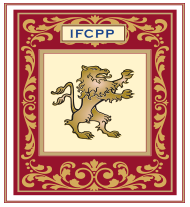
 Back to Current Featured Member
Back to Current Featured Member